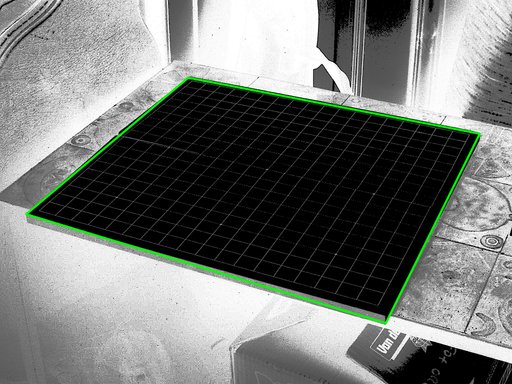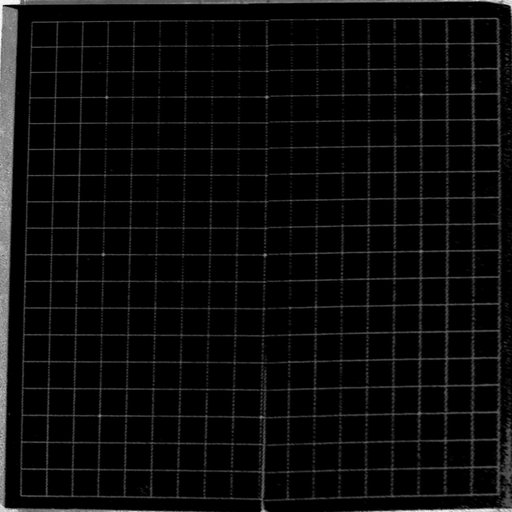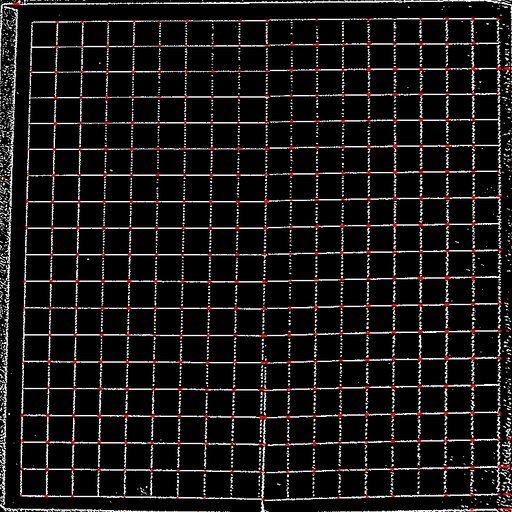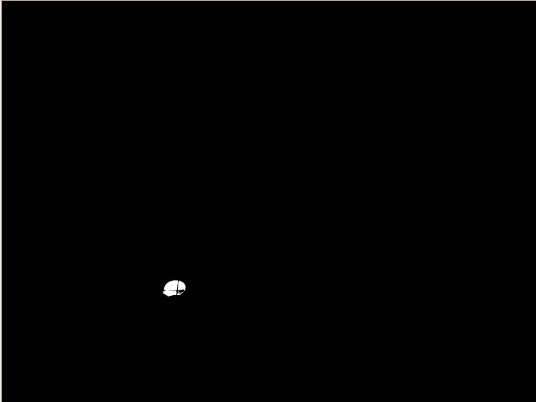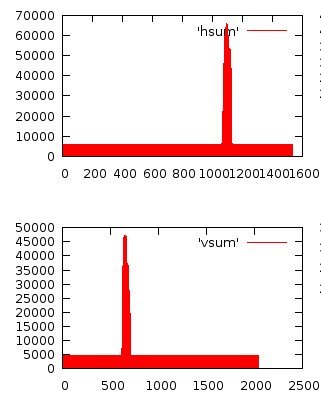Difference between revisions of "Kifu: Go game record (kifu) generator"
| Line 1: | Line 1: | ||
'''Goban and Grid Detection:''' | '''Goban and Grid Detection:''' | ||
| − | 1. The input image is filtered and thresholded and a big quadrilateral shape is selected, sorting contours detected with OpenCV. | + | 1. The input image is filtered and thresholded and a big quadrilateral shape is selected, sorting contours detected with cvFindContours() from OpenCV. |
[[Image:kifu_region.jpg]] | [[Image:kifu_region.jpg]] | ||
| − | 2. The selection is rectified with | + | 2. The selection is rectified with cvGetPerspectiveTransform() and cvWarpPerspective(). |
[[Image:kifu_rectify.jpg]] | [[Image:kifu_rectify.jpg]] | ||
| − | 3. | + | 3. cvHoughLines2() find lines in the rectified selection and we compute the intersections for each detected line segment. |
[[Image:kifu_intersections.jpg]] | [[Image:kifu_intersections.jpg]] | ||
| − | 4. | + | 4. The intersection type (border, corner, center) is determined using cvSampleLine between each supposed intersection and neighbour ones, and the grid intersections map is built, filtering fakes and interpolating missing ones; |
| − | + | 5. Finally, we can validate the grid, or restart at step 1 with another threshold, or rectify the image again with the exact grid corners coordinates known. | |
| − | 5. Finally, | ||
Revision as of 02:51, 24 August 2008
Goban and Grid Detection:
1. The input image is filtered and thresholded and a big quadrilateral shape is selected, sorting contours detected with cvFindContours() from OpenCV.
2. The selection is rectified with cvGetPerspectiveTransform() and cvWarpPerspective().
3. cvHoughLines2() find lines in the rectified selection and we compute the intersections for each detected line segment.
4. The intersection type (border, corner, center) is determined using cvSampleLine between each supposed intersection and neighbour ones, and the grid intersections map is built, filtering fakes and interpolating missing ones;
5. Finally, we can validate the grid, or restart at step 1 with another threshold, or rectify the image again with the exact grid corners coordinates known.
Image change detection:
Using vertical and horizontal RGB components sums of a thresholded difference between a reference image and the current one,
it is easy to compute the image coordinates of a played stone
Stone detection:
When a stone is played it overlaps 1 grid square on a corner, 2 on the borders and 4 in the center.
Computing horizontal and vertical pixel sums for each grid cell or around each intersection can tell where the stone is played and reveal the color of the stone, being darker or brighter than the empty intersection region.
The intersection can also be seen on the difference image when the stone is white, that could also be used to detect the stone color.
Methods for mapping the coordinates:
"2.2 Perspective transformation with two vanishing points"
(pages 2 and 3, equations 7 and 10)
http://cipa.icomos.org/fileadmin/papers/potsdam/2001-21-gf01a.pdf
Inverse homography and plane image rectification (page 14)
http://www-prima.imag.fr/jlc/Courses/2002/DEA-IVR.VO/DEA-IVR.VO.S2.pdf
"Inferring Projective Mappings" (page 3)
http://citeseerx.ist.psu.edu/viewdoc/summary?doi=10.1.1.9.7803
with related java and C source code here: http://www.developpez.net/forums/showthread.php?t=591698
Links:
http://www.sourceforge.net/projects/kifu
http://opencvlibrary.sourceforge.net/
Photointerpretation and Small Scale Stereoplotting with Digitally Rectified Photographs with Geometrical constraints:
http://cipa.icomos.org/fileadmin/papers/potsdam/2001-21-gf01a.pdf
Vision par Ordinateur:
http://www-prima.imag.fr/jlc/Courses/2002/DEA-IVR.VO/DEA-IVR.VO.S2.pdf
Projective Mappings for Image Warping:
http://citeseerx.ist.psu.edu/viewdoc/summary?doi=10.1.1.9.7803
http://sciences.ch/htmlfr/geometrie/geometrieprojective01.php
